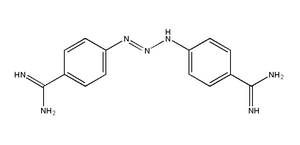Introduction: Guillain-Barre syndrome (GBS) is an acute inflammatory demyelinating disease involving peripheral nerves. It is usually postinfectious and common organisms associated with GBS are Campylobactor, Mycoplasma, HIV infection, CMV, EBV, and HSV. We report a patient who developed GBS following an infection with Human Babesiosis. To our knowledge GBS has never been reported with Human Babesiosis.
Case Report: A 54-year-old Guyanese male resident of New York City for last the 25 years, presented with a 4-day history of fever, shaking chills, headache and fatigue. Past medical history was significant for alcohol abuse, low platelets spontaneous pneumothorax and no history of splenectomy.
On admission vital signs were remarkable for fever of 101 [degrees] F. Physical examination was remarkable for an enlarged liver which was firm and non-tender. Laboratory examination revealed hemoglobin of 12.8 g/dl; WBC 8000 cells/[micro]L with a normal differential count and a platelet count of 64000/[micro]L. Blood chemistry were normal. LFTs were normal except for total protein of 4.8 g/dl with an albumin level of 1.5 g/dl. Electrocardiogram and chest X-ray (CXR) were normal. Hepatitis profile was negative r hepatitis A, B and C. Urine analysis, Urine culture and multiple Blood cultures were negative. An admitting diagnosis of viral syndrome was made. The patient was observed without any antibiotics. He continued to have high-grade fevers with shaking chills. A peripheral blood smear revealed intraerythrocytic ring like structures consistent with malaria vs babesia. He was started on quinine sulfate, doxocycline and clindamycin. Two days after initiating therapy he became confused. A CXR revealed new bilateral infiltrates and the patient developed acute hypoxemic respiratory failure requiring intubation. He also developed acute renal failure (BUN/Cr.43/2.4) with worsening liver function (AST 234 IU/L, ALT 35 IU/L, ALP 86 IU/L). A polymerase chain reaction (PCR) testing was negative for malaria. Serum titer of Babesia IGG was increased at 256 ([is less than] 16) consistent with a diagnosis of human Babesiosis. The patient improved after 8 days of therapy with normalization of renal function and improvement in hypoxemic respiratory failure. The patient was extubated and discharged home 14 days after presentation. Eight days after discharge the patient was readmitted with complaints of weakness in the lower extremities and progressively worsening respiratory failure requiring intubation. Examination revealed moderate to severe weakness in the extremities and areflexia Lumber puncture revealed increased protein (91 mg/dl) decreased glucose (52 mg/dl). Nerve conduction studies and Electromyography confirmed an axonal degenerative variant of GBS. He was treated with IV Gamma Globulin and subsequent Plasmapheresis. The patient started showing improvement in respiratory function and was subsequently extubated. He was transferred to a Rehab. facility for long term care.
Discussion: Babesiosis, a disease afflicting animals since biblical times, is being increasingly recognized in humans. It is a tick-borne malaria like illness caused by Babesia species, which are intraerythrocytic protozoa. The incubation period after the tick bite is usually 1-3 weeks. The disease ranges from an asymptomatic infection to one that is rapidly progressive and fatal. Clinical symptoms are nonspecific include fatigue, fever, anorexia headache myalgias and hepatosplenomegaly. Complications reported as hemolytic anemia, CHF, ARDS and ARF. Guillain-Barre Syndrome is an acute inflammatory demyelinating polyneuropathy characterized by progressive muscle weakness and areflexia. Guillain-Barre Syndrome has been reported to follow vaccination, epidural anesthesia, and thrombolytic agents, and has been associated with some systemic diseases such as Hodgkins disease, Systemic Lupus Erythematosus and infections with Campylobactor, Lyme Disease, Epstein-Barr virus, Cytomegalovirus, Herpes simplex virus, Mycoplasma, and recently acquired HIV infection. To our knowledge GBS has never been reported as a complication of Human Babesiosis. There was one case report in 1979 by Ruebush et al. of Guillain-Barre Syndrome associated with Babesiosis but was postulated to be related with complications of Diminazene Aceturate therapy for Babesiosis.
Conclusion: We believe that Human Babesiosis should included in the differential diagnosis of patients who develops postinfectious GBS.
Muhammad Hanif, MD, N. A. Adhami, MD, R. Ahmed, MD, R. Ayinla, MD, FCCP, H. Rahman, MD, FCCP, S. Sanelli-Russo, MD, A. Gonzalez, MD, J. Fleischman, MD, FCCP--Mount Sinai Services at Queens Hospital Center, Jamaica, Mount Sinai School of Medicine, New York
COPYRIGHT 1999 American College of Chest Physicians
COPYRIGHT 2000 Gale Group



